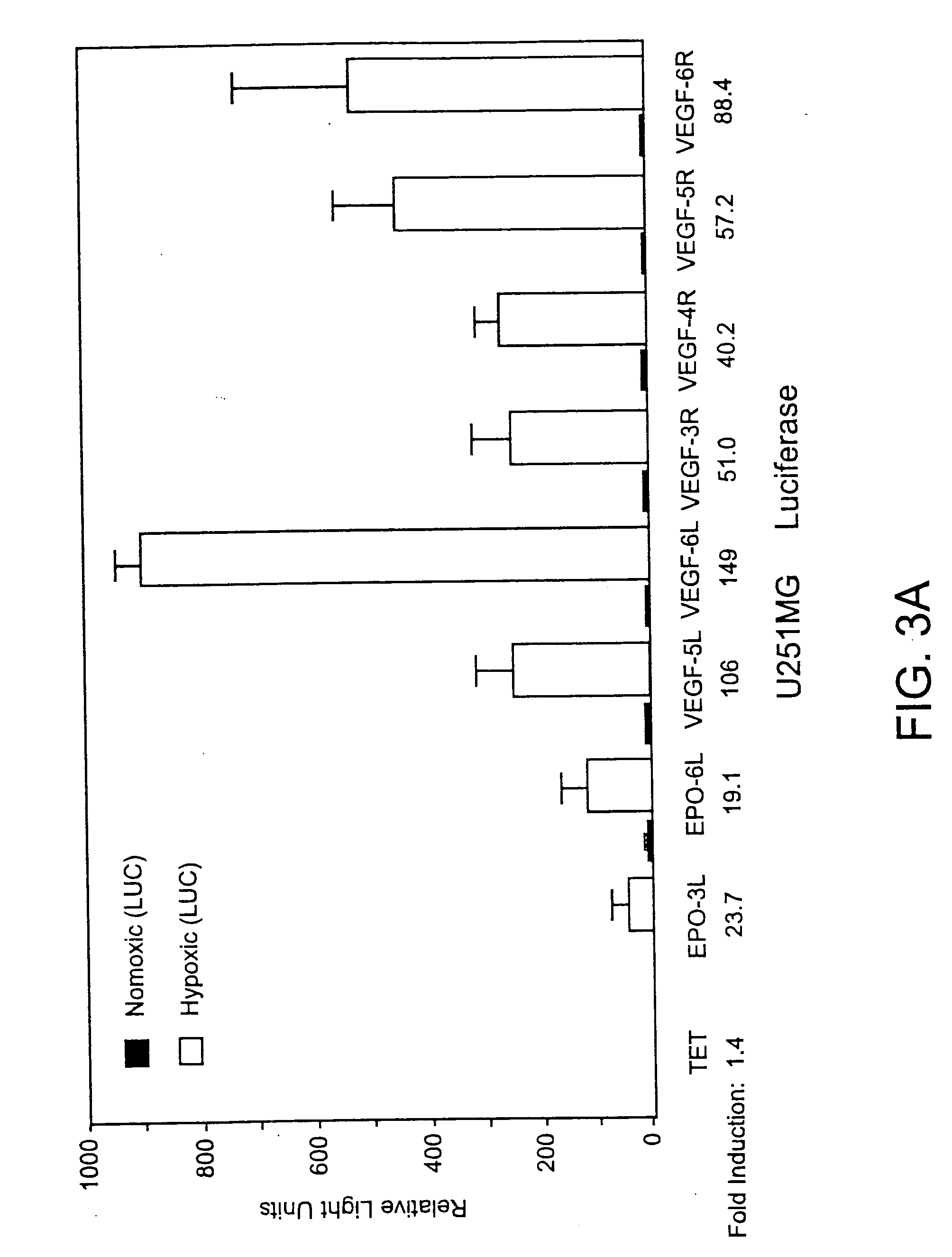Viruses targeted to hypoxic cells and tissues
a virus and hypoxic cell technology, applied in the field of recombinant viruses, can solve the problems of limited efficacy, low in vivo transduction efficiency, and diminished initial promise of this approach, and achieve the effect of destroying the hypoxic tumor tissues
- Summary
- Abstract
- Description
- Claims
- Application Information
AI Technical Summary
Benefits of technology
Problems solved by technology
Method used
Image
Examples
example 1
Infection of Tumor Cell Lines by Adenoviruses
[0096] This example shows brain tumor cell lines are efficiently infected by adenoviruses. The utilization of adenoviruses as gene therapy vectors for brain tumors is dependent upon viral entry. Infection of human cells with adenoviruses is a multistep process which involves specific interactions of at least two viral proteins and their respective cellular receptors. Brain tumors are histologically and genetically heterogeneous and, therefore, it is possible that only a small subset of these tumors can be infected by adenoviruses. To test this, the capacity of 8 human glioma cell lines (D247MG, U251 MG, LN229, LN464, U87MG, LNZ308, T98G, U138MG) to be infected by adenovirus was examined using a replication-deficient adenovirus which contains a constitutively active exogenous LacZ reporter gene (AdLacZ, UNC-Virus Vector Core Facility, Chapel Hill, N.C.). Uninfected glioma cells and AdLacZ infected 293 human embryonic kidney cells were use...
example 2
Effect of Hypoxia on Adenovirus Infection of Tumor Cell Lines
[0099] This example shows that adenovirus infection of brain tumor cell lines is not dramatically affected by hypoxia. The therapeutic efficacy of the HYPR adenovirus is dependent upon its ability to efficiently infect hypoxic tumor cells. The level of adenovirus infection under normoxic and hypoxic conditions in two genetically and biologically diverse glioma cell lines, D247MG and LN229, were compared. The cells were incubated for 72 h under normoxic (20.8% O2) or hypoxic (1% O2) conditions and then infected with a replication-deficient AdLacZ virus at several MOI's as described above. The cells were histochemically stained at 24 h post infection for β-gal activity and the percentage of infected (blue) cells was visually quantified (Table 1). It was found that the percentage of infected cells was slightly reduced under hypoxic conditions in D247MG (9% reduction) and LN229 (28% reduction) cells at sub-saturating MOI's. T...
example 3
Replication and Progeny Production of Adenovirus under Hypoxic Conditions
[0100] This example shows AdLacZ replication and progeny production are efficient under hypoxic conditions. The possibility that hypoxic cells will not allow high efficiency adenovirus replication and progeny production was tested in 293 cells using AdLacZ. The 293 cells are a human embryonic kidney cell line which complements, in trans, the viral functions missing in replication-deficient AdLacZ and allows viral production. Viruses were harvested from AdLacZ infected 293 cells grown under normoxic (20.8% O2) and hypoxic (1% O2) conditions and then used to infect D247MG and LN229 glioma cell lines under normoxia at several different MOI's. The cells were histochemically stained at 24 h post infection for β-gal activity and the percentage of infected (blue) cells was visually quantified and used as an estimate of viral titer. The results are summarized in Table 2. It was found that the percentage of infected (b...
PUM
| Property | Measurement | Unit |
|---|---|---|
| Fraction | aaaaa | aaaaa |
| Fraction | aaaaa | aaaaa |
| Pressure | aaaaa | aaaaa |
Abstract
Description
Claims
Application Information
 Login to View More
Login to View More - R&D
- Intellectual Property
- Life Sciences
- Materials
- Tech Scout
- Unparalleled Data Quality
- Higher Quality Content
- 60% Fewer Hallucinations
Browse by: Latest US Patents, China's latest patents, Technical Efficacy Thesaurus, Application Domain, Technology Topic, Popular Technical Reports.
© 2025 PatSnap. All rights reserved.Legal|Privacy policy|Modern Slavery Act Transparency Statement|Sitemap|About US| Contact US: help@patsnap.com



